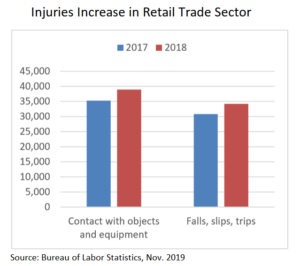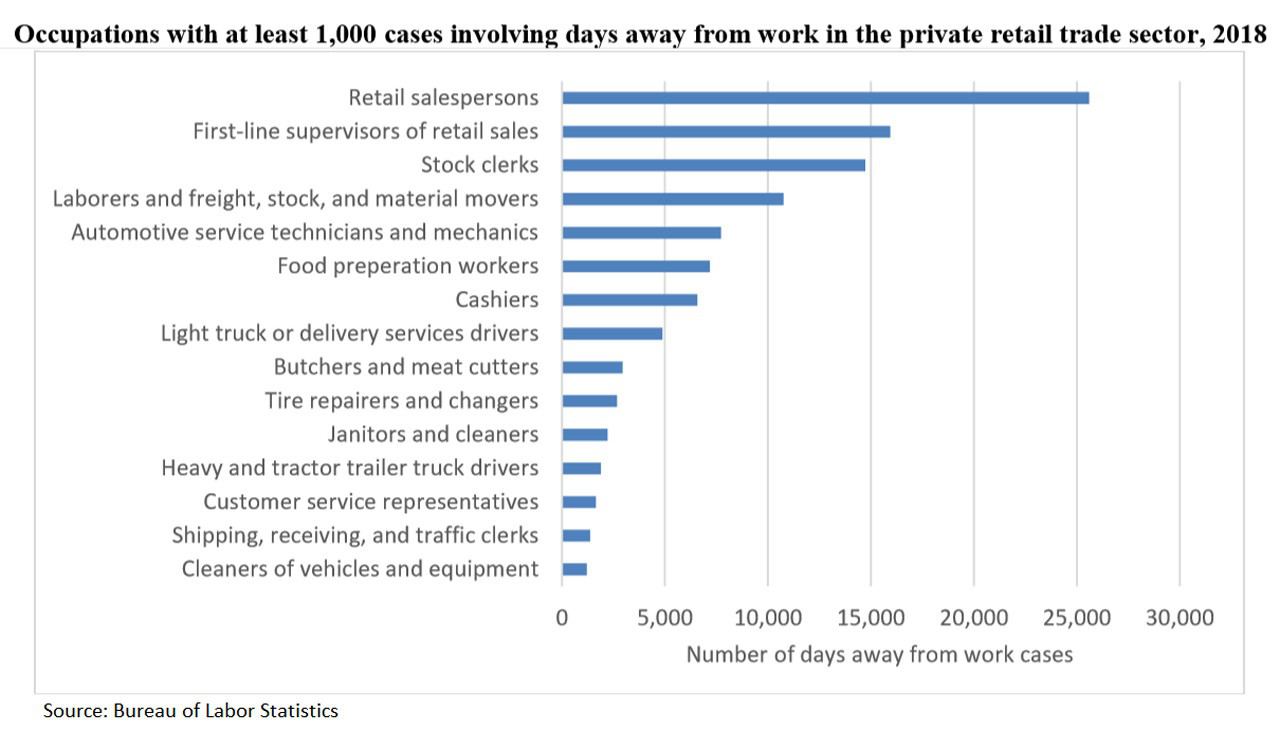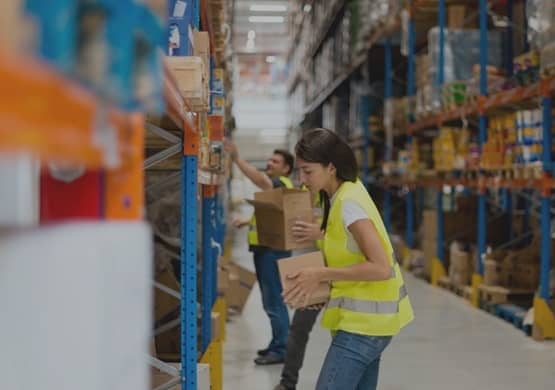Are Retail Stores Getting More Safe?
Are retail stores getting more safe for workers? The latest figures from the US Bureau of Labor Statistics suggest otherwise.
Injuries Increase in the Retail Sector
In fact, the retail sector was the only US sector with an increase in the number of injuries in 2018. The total recordable cases rate increased from 2017 to 2018 from 3.3 cases to 3.5 cases per 100 full-time employees. Injuries to first-line retail supervisors increased by 25% in 2018.
Across retail categories, injuries and illnesses were up. General merchandise stores reported the most injuries and illnesses (96,000), followed by food and beverage stores (92,600 cases); motor vehicle and parts dealers (61,500 cases); and building material and garden supply stores (53,800 cases).

Slips, Trips, and Falls
Slips, trips, and falls continue to be a major risk in the retail sector. Of 126,580 days away from retail work in 2018, 34,190 were a result of slip, trip, and fall injuries – an increase of 11% from 2017. Injuries resulting from contact with objects and equipment saw an increase of 10% to 38,940 cases. These events had a higher rate for workers in the retail sector than for workers in private industry.
Data also shows injuries by occupation- 15 occupations had at least 1,000 “days away from work” cases in 2018. Injuries and illnesses to retail salespersons accounted for 20% of these cases. These cases increased from 23,240 in 2017 to 25,600 in 2018.

Ensuring a Safer Retail Environment
- Focus on influencing work processes rather than safety rules. Enable a culture where there is an inherent understanding that a supervisor expects workers to complete each task safely. Store associates should understand that safety is implicit in every job task they’re asked to perform.
- Calculate safety costs per supervisor. If injury costs are not properly allocated, supervisors will have little motivation to spend time on health and safety activities. Enact positive reinforcement towards supervisors whose teams’ have superior safety records.
- Establish safety expectations as soon as new employees arrive. In these situations, timing is critical. Safety expectations for stores and warehouses are likely to go beyond what a worker would typically do. Therefore it’s important to emphasize that you take them seriously as soon as each new employee arrives.
Right click to download this infographic on injuries in the retail sector:






